Peak summer is brutal on lawns. Here are some quick and useful tips to help your grass stay green.
1. Watch the Weather, Not Just the Calendar
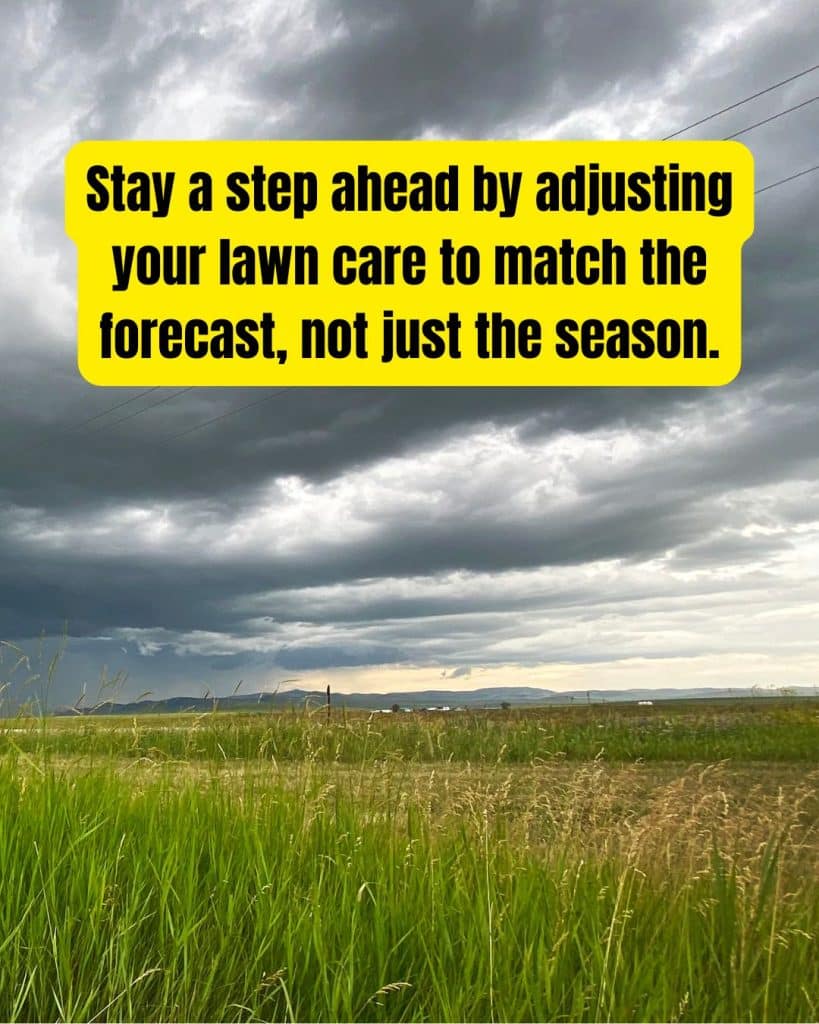
The first thing I do each summer is pay attention to weather patterns.
If there’s a dry spell coming, you need to act fast; don’t wait until your grass is already brown and crunchy.
Set a reminder to check the weekly forecast and keep an eye out for heatwaves, extended dry periods, and surprise thunderstorms that might buy you a little time.
2. Water Deeply, Not Daily
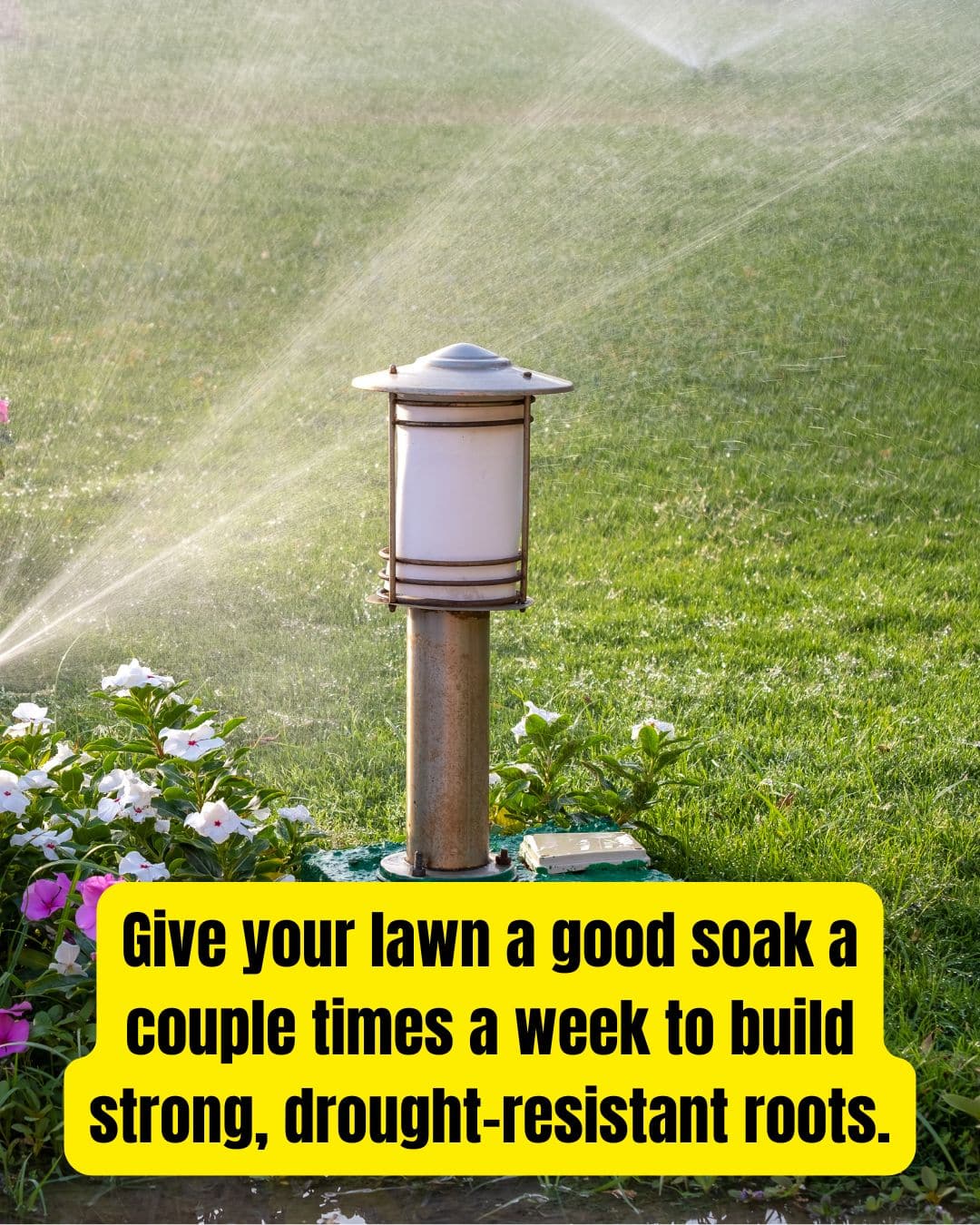
The Right Way to Water
Most folks think lawns need a little splash every day, but that just encourages shallow roots, and shallow roots dry up fast.
What your lawn wants is a deep, thorough soak about twice a week. This means letting your sprinkler run long enough to deliver at least one inch of water each time.
Pro tip: Set an empty tuna can in your yard and stop watering when it’s full. That’s your inch!
Best Time to Water
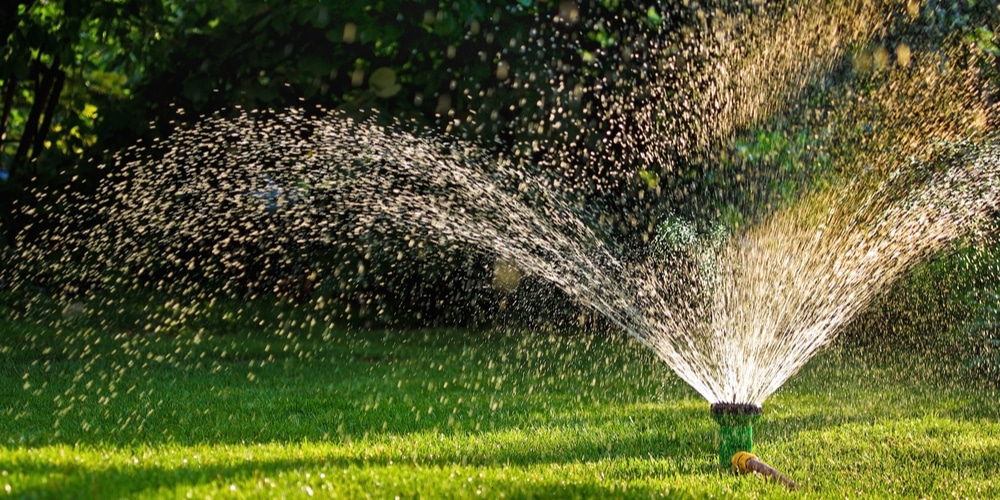
Water early in the morning (between 5 a.m. and 9 a.m.) so the sun doesn’t burn off the moisture before the roots soak it up.
Evening watering can invite disease because grass stays damp overnight.
Watering Restrictions
Check for local watering rules. Some towns restrict days or times, especially during drought.
Plan ahead so you don’t get caught off guard.
3. Adjust Your Mowing Habits
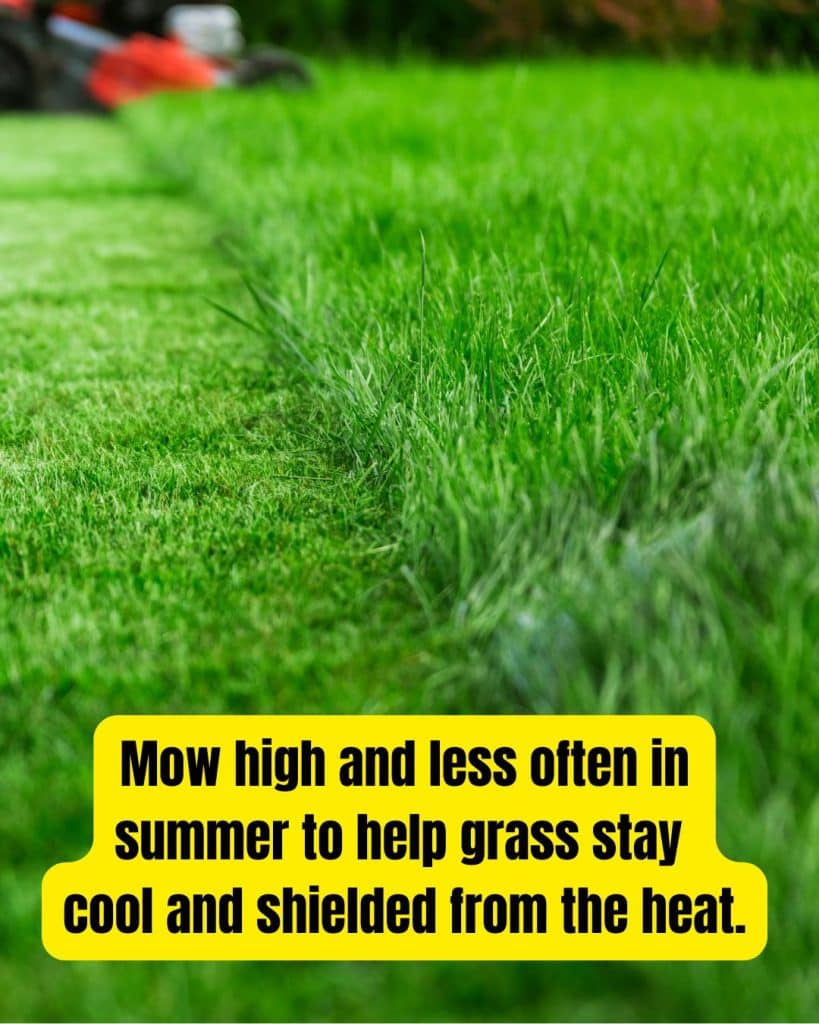
Raise That Mower Deck
Cutting your grass too short in July is a one-way ticket to a fried yard. Set your mower at its highest setting; usually about 3 to 4 inches for most fescues, bluegrasses, or ryegrasses.
Taller grass shades the soil, keeps roots cool, and helps crowd out weeds.
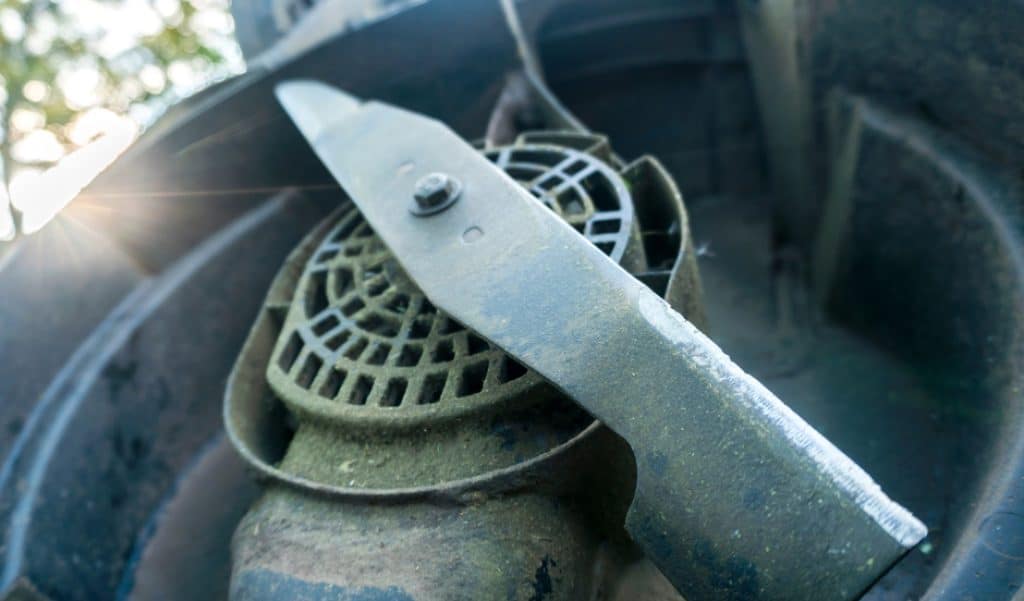
Don’t Mow When It’s Stressed
If your lawn is looking wilted or crunchy, skip mowing until it recovers.
Mowing during heat stress is a sure way to cause further damage.
Leave the Clippings
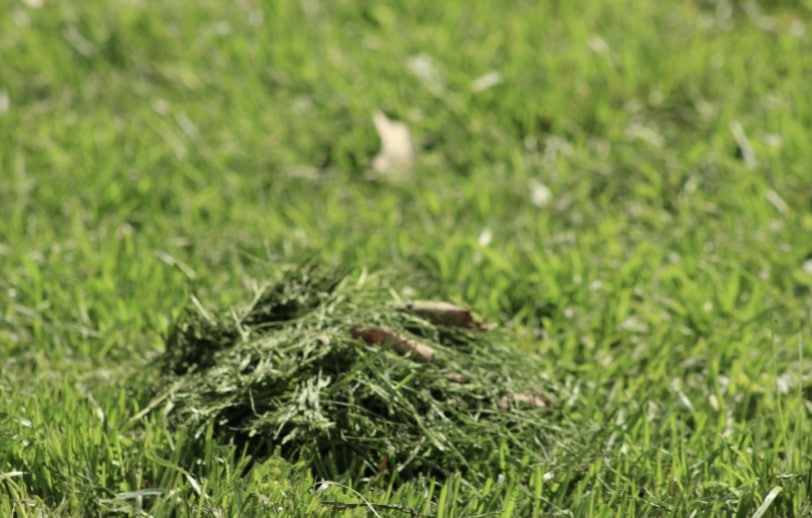
Don’t bag those clippings: let them fall right back onto the lawn.
Grass clippings break down quickly and provide a natural mulch that helps lock in moisture and add nutrients.
Keep Foot Traffic to a Minimum
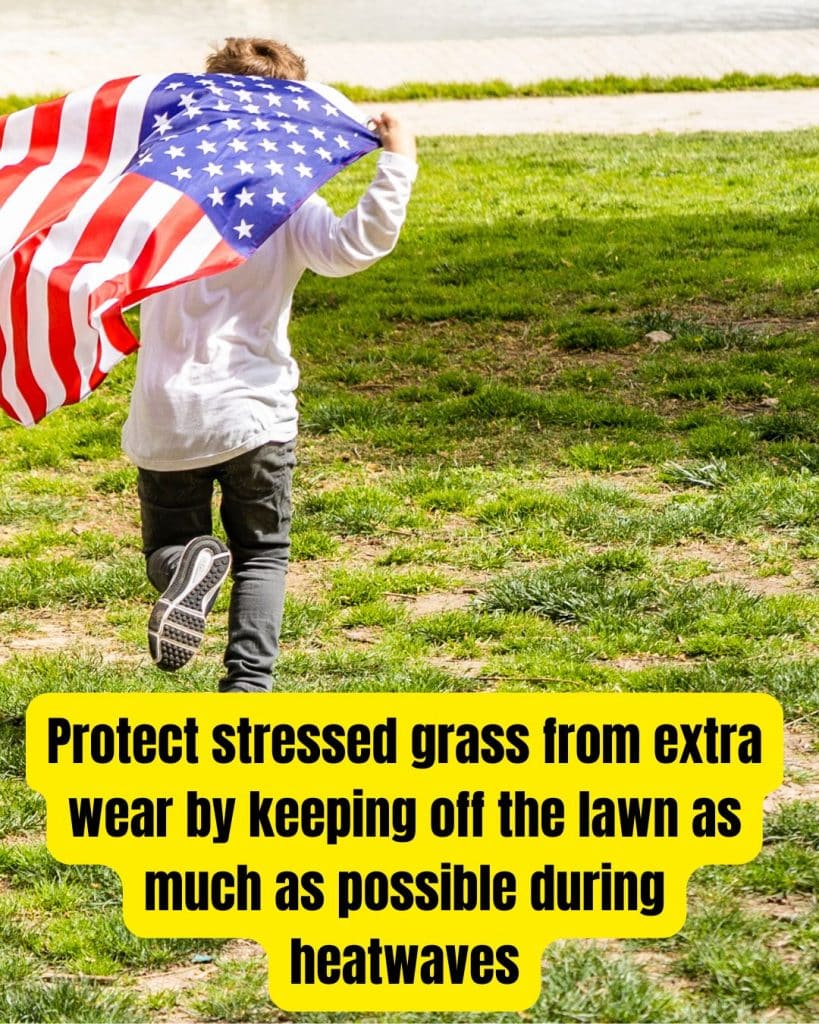
(I have 5 kids, so this is the hardest one for me.)
When your lawn is stressed from heat and drought, the last thing it needs is extra abuse. Avoid parking cars, setting up kiddie pools, or heavy foot traffic on dry grass.
Compacted soil only makes things worse.
If you have a path that gets heavy use, lay down stepping stones or use mulch to keep grass from being trampled.
4. Fertilize Sparingly (or Not at All)
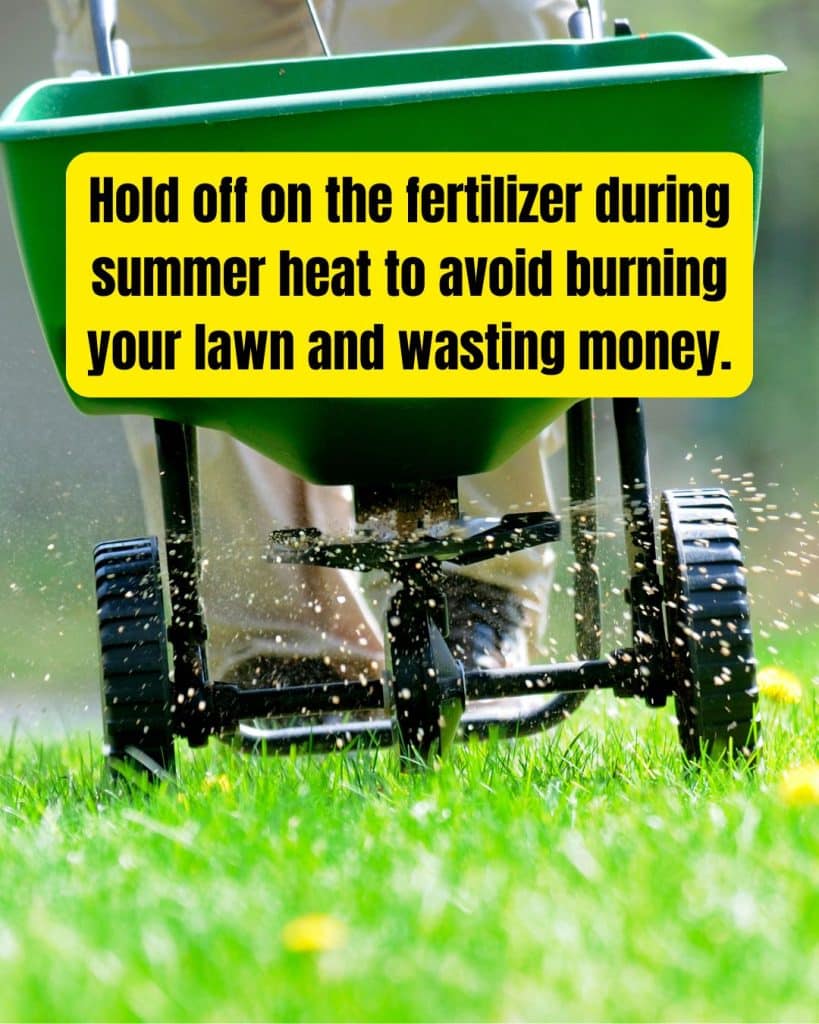
Summer Is NOT the Time for Nitrogen
Fertilizer, especially high-nitrogen blends, can do more harm than good in the heat. Fertilizing when it’s hot can burn grass and push it to grow when it should be resting.
If you must fertilize, wait until temps drop or choose a slow-release, organic option.
Focus on Soil Health
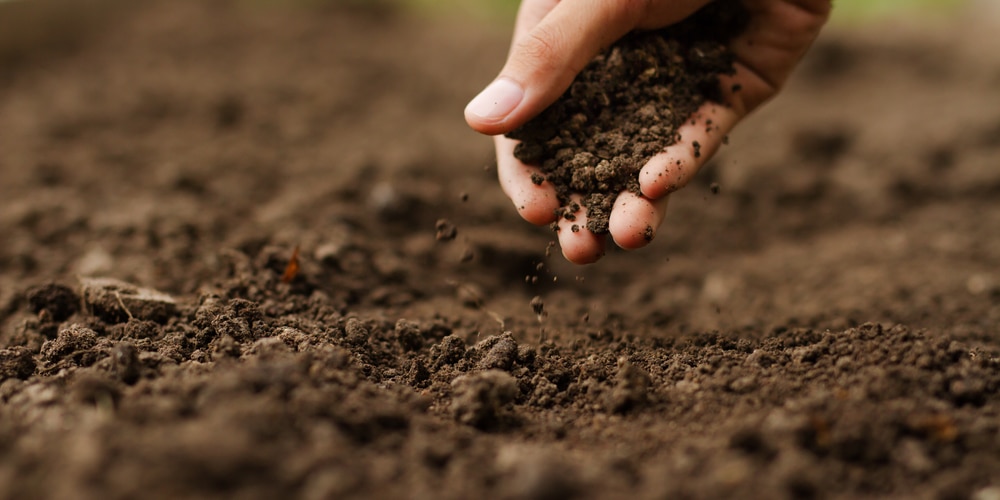
If you want to do something positive, try top-dressing with compost instead.
A thin layer of compost (about ¼ inch) feeds the soil and helps retain moisture, without stressing your grass.
5. Check and Fix Your Soil

Test Your Soil
If your lawn is struggling year after year, get a soil test.
Poor pH or lack of organic matter can make grass less resilient to heat. Most county extension offices offer cheap soil tests.
Aerate If Needed
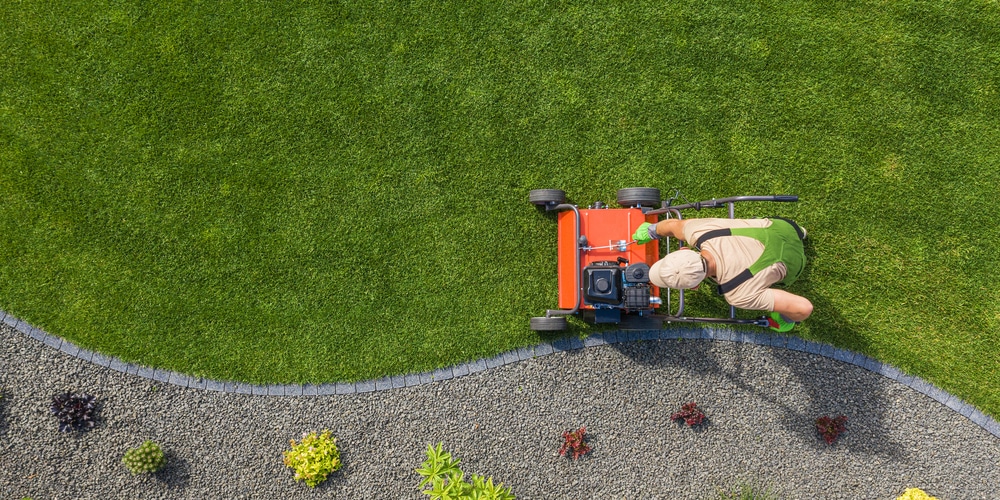
Compacted soil makes it harder for water to soak in and roots to grow deep.
If you haven’t aerated in a couple years, schedule it for fall, but in a real pinch, a manual core aerator can help spot-treat hard spots even in summer.
6. Mulch Around Edges and Beds
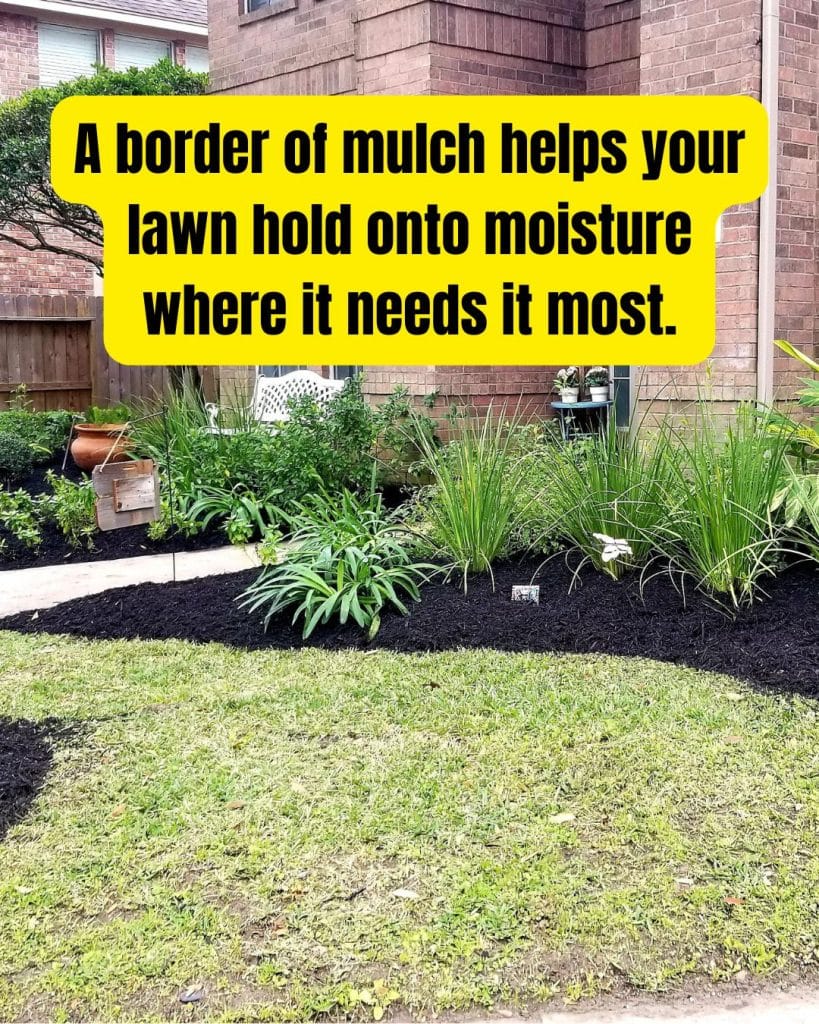
Where grass meets trees, flower beds, or fences, use mulch to help keep soil cool and moist.
This prevents “burn lines” at the edges where grass dries out first.
7. Watch Out for Lawn Pests
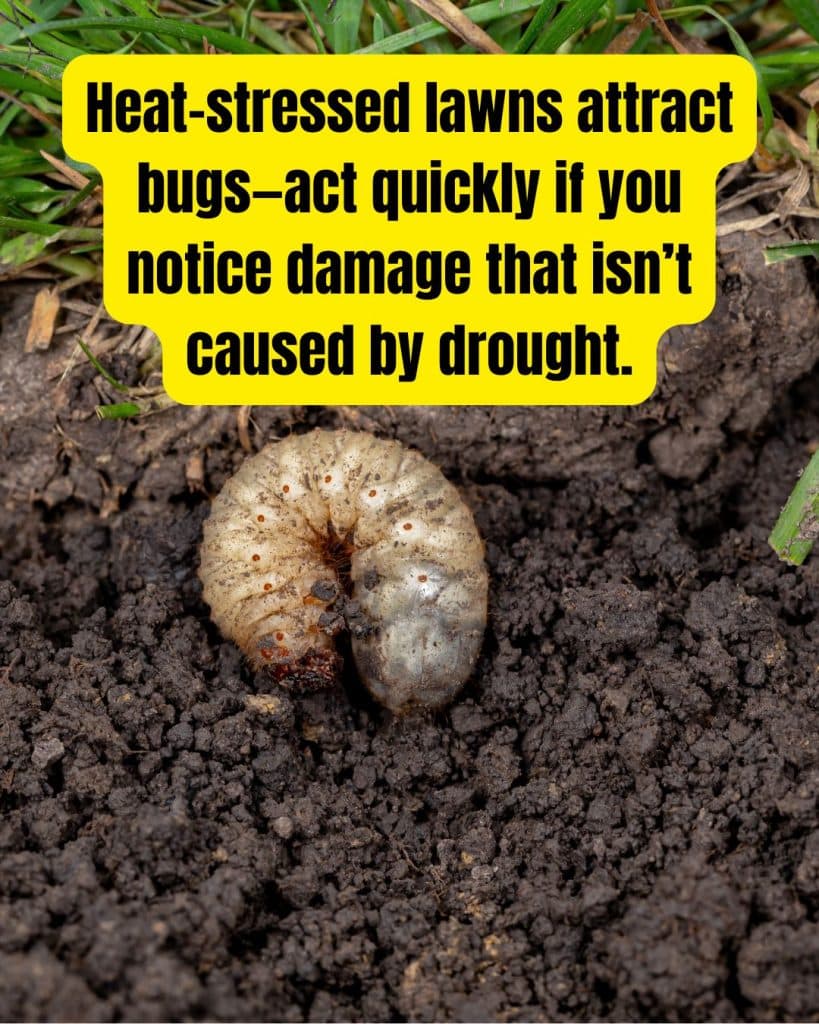
Heat-stressed lawns are magnets for chinch bugs, grubs, and fungal diseases. If you see brown patches that don’t green up after watering, inspect for pests.
Use targeted treatments only if needed. Broad-spectrum chemicals can hurt helpful bugs and make things worse.
8. Don’t Forget to Sharpen Your Mower Blade
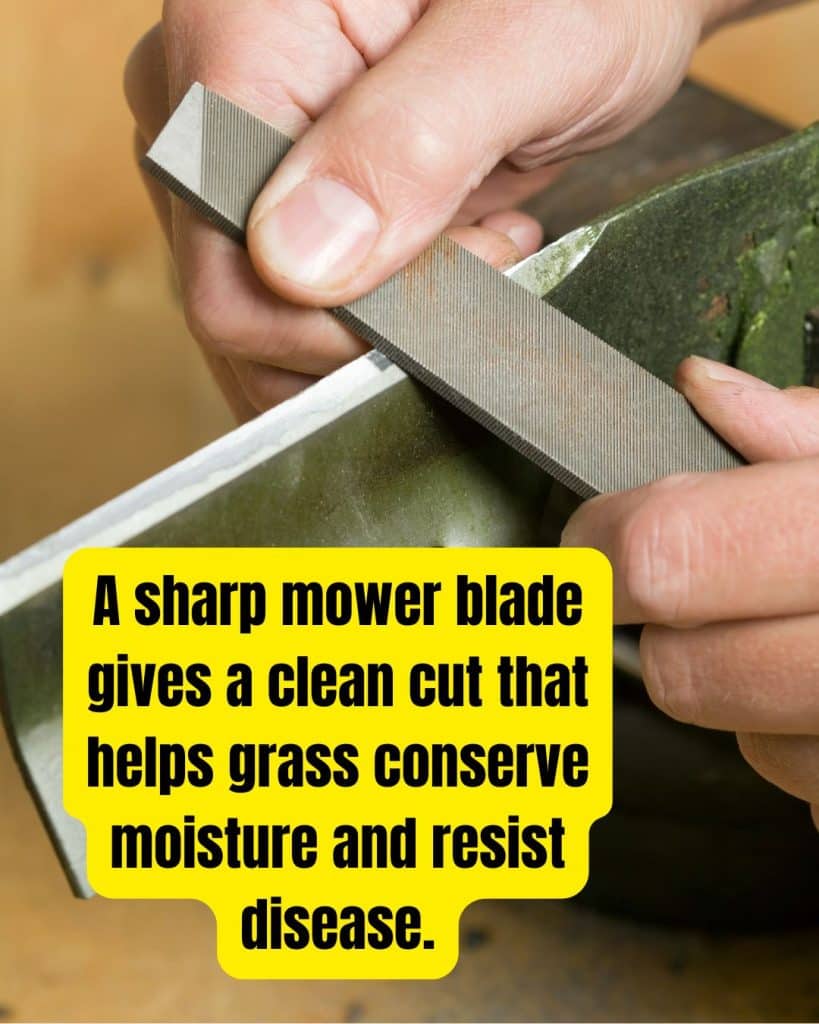
A dull mower blade shreds grass blades instead of cutting them, leaving jagged edges that lose more water and are prone to disease.
Sharpen your mower blade at least once a season, twice if you mow often.
9. Consider Drought-Tolerant Grass or Overseeding
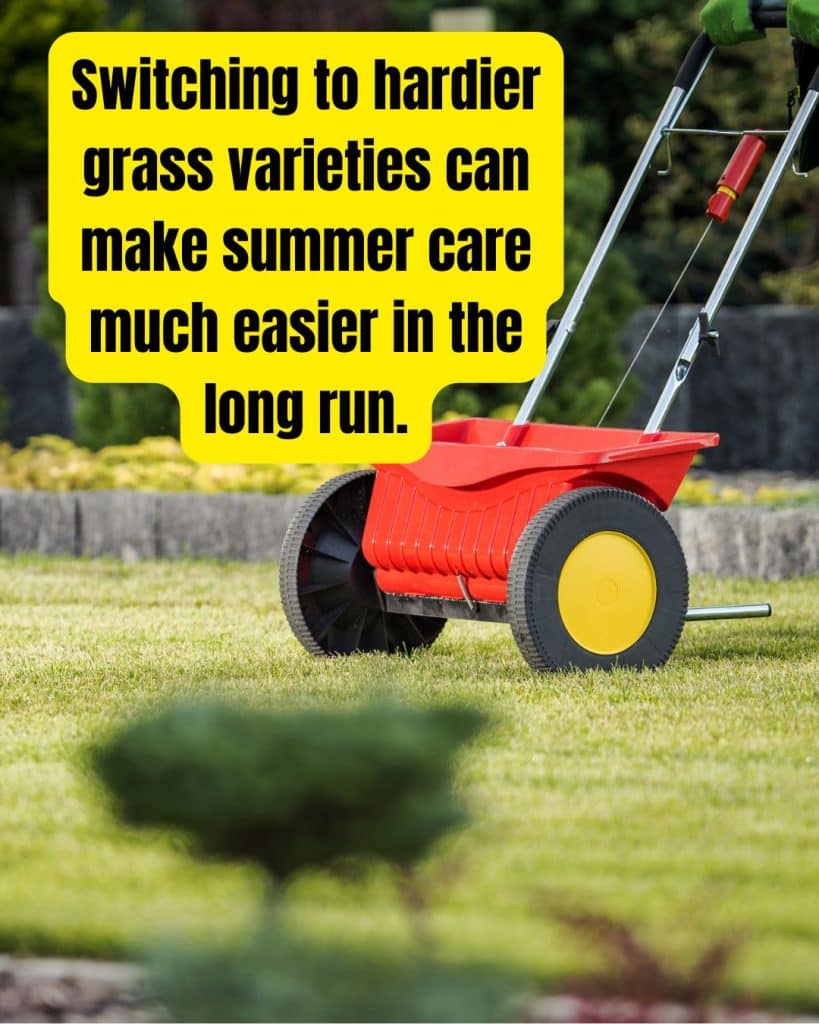
If you’re in an area that burns up every summer, consider overseeding with more drought-tolerant varieties.
Tall fescue, buffalo grass, and Bermuda all hold up better in the heat. Plan to overseed in early fall.
10. Let Some Dormancy Happen
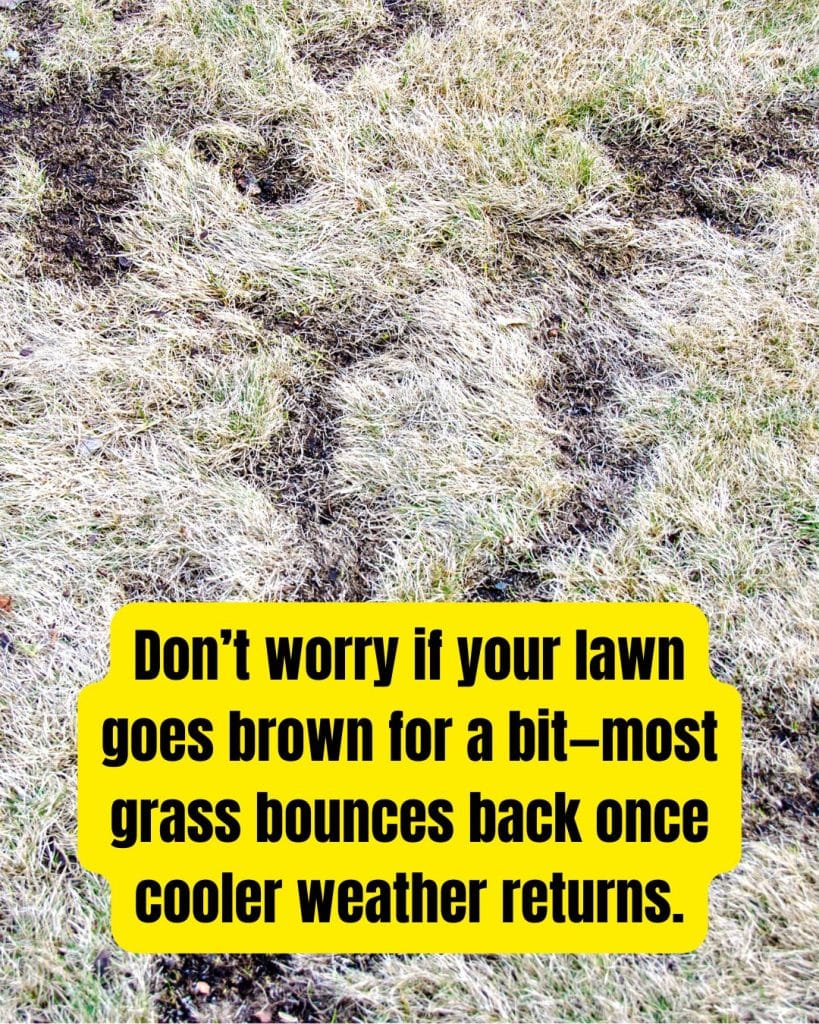
It’s perfectly normal for grass to go a little dormant and brown up in July, it’s a survival strategy.
As long as the crowns (the white base of the grass) stay alive, the lawn will bounce back with cooler weather and rain.
Don’t panic if your lawn turns tan for a few weeks. As long as you water occasionally and don’t scalp it, it will recover.
The Bonus Section

Spot-Watering
If water is scarce, focus on the areas that need it most: sunny spots, newly seeded patches, or slopes that dry out quickly.
Hand Tools Over Sprinklers
A simple hose-end sprayer or a watering wand can help you get water where it’s needed without wasting it on sidewalks or driveways.
Rain Barrels and Greywater
If local laws allow, set up a rain barrel to catch runoff from your roof. You can also use leftover bathwater (“greywater”, no harsh soaps or chemicals!) to hand-water flower beds or dry spots.
Avoid New Planting
July is not the time to seed a new lawn or transplant grass, wait for cooler weather in early fall or late spring for best results.
FAQs
How often should I water my lawn in July?
Aim for one inch of water a week, divided over one or two deep waterings. More often during heatwaves, but don’t overdo it—too much water can cause fungus.
What is the best height to cut grass in the summer?
Set your mower at its highest setting—usually 3 to 4 inches. Taller grass shades roots and conserves moisture.
Should I fertilize my lawn during hot weather?
Generally, no—it can burn grass and do more harm than good. Focus on soil health instead.
Can I bring my lawn back if it’s already brown?
If the crowns are alive and you start watering correctly, your lawn will recover when the weather cools down.
Smart, Low-Tech Summer Lawn Tips
- Move sprinklers around to avoid puddles and runoff.
- Keep an eye on areas shaded by trees; these often need less water.
- If you have a dog, pick up waste quickly and flush with water. Dog urine burns grass even faster in hot weather.
- Watch for thatch build-up (spongy layer at soil surface). It prevents water from soaking in. Dethatch if needed in the fall.
What NOT to Do
- Don’t mow during the hottest part of the day– you’ll stress the lawn and yourself.
- Don’t water in the heat of the afternoon– most of it evaporates.
- Don’t dump fertilizer or herbicides during a heatwave– wait for cooler days.
- Don’t expect perfection– every lawn struggles in July heat.
Key Takeaways for a Surviving Summer Lawn
- Water deeply, not daily.
- Raise your mower.
- Skip the fertilizer.
- Mulch and compost for moisture.
- Spot-treat, don’t over-treat.
- Embrace a little dormancy.
That’s the nuts and bolts. July is tough, but with the right habits, you’ll keep your lawn going strong, and you’ll spend less time fighting to bring it back from the brink later.
If you stick to these practical steps, you’ll be the envy of the block, even when it’s 100 degrees in the shade.